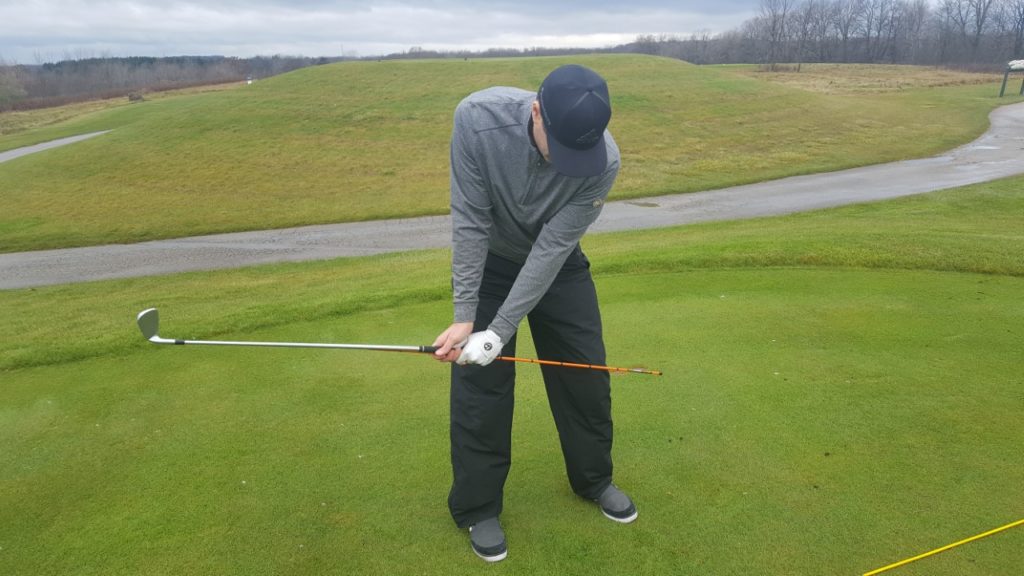MGM would like to congratulate Andy Podolak on accepting a new position at the River Club of Mequon in Mequon, Wisconsin. This will be his last Pro Page but we are thrilled to feature Andy’s long-time 1st Assistant Pro and now new PGA Head Professional Jason Brindowski within our remaining three 2018 issues.
One of the most mysterious elements of a repetitive golf swing is developing a proper swing plane. What makes it so elusive is that many instructors don’t do a good enough job of explaining exactly what swing plane is and why it is vital to a successful shot. Fortunately for our readers, we have Andy Podolok on staff who views swing plane as one of golf’s key fundamentals and is thrilled to explain the principle.
I believe to have an efficient golf swing day in and day out one needs a few variables in place before establishing your swing plane. First is proper alignment to your target, maintaining an athletic posture, and finally the proper sequence on the downswing. One then can develop and repeat an efficient swing plane.
The swing plane is literally the tilt of the inclined plane made by the club’s shaft. Each golfer has his own swing plane, determined by his body type and the club he or she is using. The length of the golfer’s arms, legs, and torso affect the posture while the length of the club affects the angle of the shaft at address. A 5’3” golfer holds a 40-inch-long club at more of an angle (flatter) than a 6’3” golfer does. That same 5’3” golfer will naturally produce a flatter swing plane than the 6’3”golfer. It doesn’t really matter as long as you have an athletic, repeatable setup and correct posture.
Backswing Plane: A productive way to start the club on plane is to begin the backswing motion by moving the upper body or chest first and keeping the hands and club head quiet. (See photo). This will help keep the club head outside your hands on the way back and will keep the club on plane. Keep turning the shoulders and the butt end of the club should point at or just inside the target/ball flight line.
Drill: As pictured, line up to one long, straight line made by multiple alignment sticks to generate a target/ball flight line. Your toe line and shoulders should be parallel to line. Grip the club with a three to four foot alignment stick and have that stick rest on your left hip when setting up to the ball. As you move the club back, the alignment stick will move down to the ground but remains touching your lead leg. You’ll notice the club head stay outside your hands and as the backswing lengthens the butt end of your grip with the alignment stick will be even to the target/ball flight line. From here, you want to finish your back swing with a little more shoulder turn and leave the hands quite.
Downswing: To keep the club on plane when starting your downswing the body MUST move in the same order. This is called sequence. It starts from the ground up. That means the pressure/weight in the feet have to move from the back foot to the lead foot before the upper body moves. Once that pressure/weight is in the lead foot, you then start the downswing move with the club to the ball. This sequence in motion gives you the best chance to keep the club on plane in the downswing.
If you look back at the greatest players, their swing planes will range from very flat (Ben Hogan, Gary Player and Lee Trevino) to upright (Jack Nicklaus, Tom Weiskopf and Tom Watson). The flatter swing has a better chance of producing a lower trajectory with a tendency to draw the ball. The more upright swing gives a better chance to produce a higher trajectory with a tendency to fade the ball. At the end of the day, it doesn’t matter as long as you attempt to repeat your alignment, setup, posture and swing sequence. This will help you to produce the desired ball flight you can control.
Hopefully this gives you a better understanding how to develop and maintain the proper swing plane for your golf swing.


